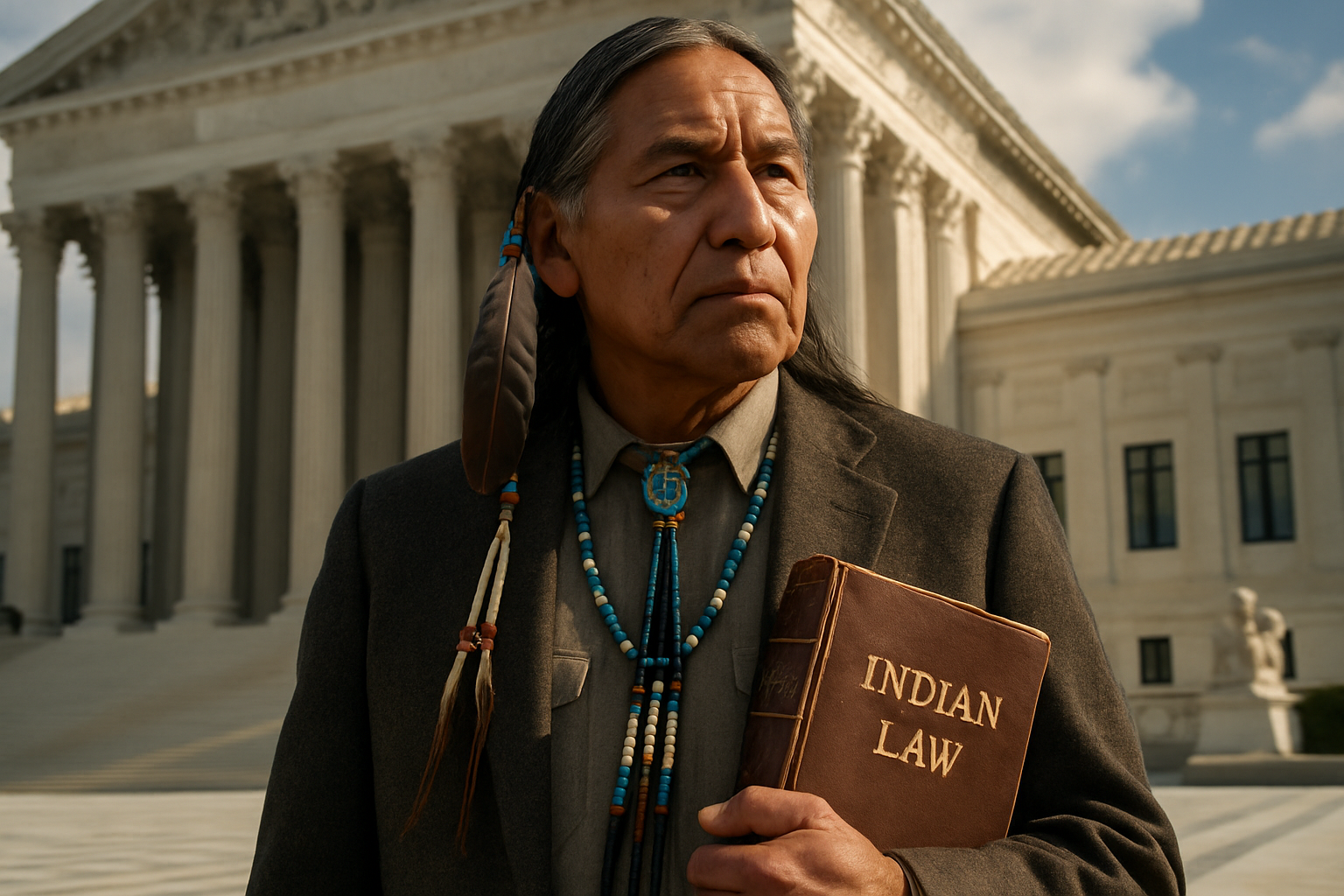The Intersection of Tribal Sovereignty and Modern Federalism
In a legal landscape where centuries-old treaties meet contemporary governance challenges, tribal sovereignty represents one of American law's most complex and evolving doctrines. Native American tribes occupy a unique position within the American legal framework—neither fully independent nations nor merely subordinate entities. This relationship, often misunderstood and frequently contested, continues to shape legal battles over jurisdiction, resource management, and self-determination rights across the United States.

The Foundations of Tribal Sovereignty
Tribal sovereignty predates the United States Constitution and derives from the inherent authority of indigenous nations to govern themselves. The legal foundation for tribal sovereignty emerged through what are now known as the Marshall Trilogy—three Supreme Court cases decided between 1823 and 1832 under Chief Justice John Marshall. In Johnson v. M’Intosh (1823), Cherokee Nation v. Georgia (1831), and Worcester v. Georgia (1832), the Court established tribes as “domestic dependent nations” with inherent powers of self-governance but ultimately subject to federal authority.
This framework created a trust relationship between tribes and the federal government, limiting tribal interactions with foreign powers and establishing federal supremacy while recognizing inherent tribal authority over internal affairs. The trust doctrine imposed responsibilities on the federal government to protect tribal resources and rights while simultaneously asserting dominance over tribal nations. This contradiction has generated legal tension that persists today, with courts struggling to define precise boundaries between tribal authority and federal or state jurisdiction.
The Modern Resurgence of Tribal Self-Governance
The mid-20th century marked a turning point for tribal sovereignty with the passage of the Indian Reorganization Act of 1934. This legislation ended the disastrous allotment era and encouraged tribes to adopt constitutions and establish formal governance structures. However, true sovereignty revitalization didn’t gain momentum until the Self-Determination Era beginning in the 1970s. The Indian Self-Determination and Education Assistance Act of 1975 represented a fundamental shift in federal policy, allowing tribes to contract with the federal government to operate programs previously administered by federal agencies.
Recent decades have witnessed tribes exercising expanded authority over healthcare delivery, education, natural resource management, and economic development. Many tribes now operate sophisticated governmental systems that include tribal courts, regulatory agencies, and social service departments. The development of tribal court systems has been particularly significant, with many tribes administering complex legal codes covering areas from family law to commercial regulations. These courts blend traditional indigenous jurisprudence with principles adapted from Anglo-American legal systems, creating unique legal frameworks that reflect tribal values and priorities.
Jurisdictional Complexities and Legal Challenges
Jurisdiction—determining which governmental entity has authority over particular people, territories, or subject matter—remains one of the most contentious aspects of tribal sovereignty. In criminal matters, jurisdiction depends on complex factors including the identity of the perpetrator and victim (Indian or non-Indian), the location of the crime (whether on tribal land), and the nature of the offense. The 1978 Supreme Court decision in Oliphant v. Suquamish Indian Tribe severely limited tribal criminal jurisdiction by holding that tribes lack inherent authority to prosecute non-Indians who commit crimes on tribal lands.
Congress has enacted limited reforms through legislation like the Tribal Law and Order Act of 2010 and provisions in the Violence Against Women Reauthorization Act allowing tribes to prosecute non-Indians for domestic violence offenses against tribal members. Civil jurisdiction presents different challenges, with tribes generally maintaining greater authority over civil regulatory matters but facing limitations when attempting to assert jurisdiction over non-members. The Supreme Court has repeatedly narrowed tribal civil jurisdiction through cases like Montana v. United States (1981) and Nevada v. Hicks (2001), creating a patchwork of rules that often require case-by-case determination.
Economic Development and Tribal Sovereignty
Economic self-sufficiency represents a crucial element of practical sovereignty for tribal nations. Beginning with the Indian Gaming Regulatory Act of 1988, many tribes have developed gaming enterprises that generate revenue for governmental services and infrastructure development. Beyond gaming, tribes have diversified into energy production, manufacturing, tourism, and technology sectors. These economic ventures often raise complex questions about state taxation authority, regulatory oversight, and intergovernmental cooperation.
Tribal economic development frequently involves partnerships with non-Indian businesses, requiring tribes to develop sophisticated legal and regulatory frameworks to attract investment while protecting tribal interests. Some tribes have established tribal business corporations, limited liability companies, and economic development authorities that operate under tribal law but interact with external markets. These entities navigate complex questions of sovereign immunity, contract enforcement, and dispute resolution mechanisms that blend tribal, federal, and state legal principles.
The Future of Tribal Sovereignty in a Changing Legal Landscape
Recent Supreme Court decisions suggest an uncertain future for tribal sovereignty. In McGirt v. Oklahoma (2020), the Court upheld treaty boundaries establishing the Muscogee (Creek) Reservation, with significant implications for criminal jurisdiction across eastern Oklahoma. More recently, however, cases like Oklahoma v. Castro-Huerta (2022) have narrowed aspects of tribal authority, allowing states greater jurisdiction on tribal lands under certain circumstances. These decisions reflect ongoing tensions in federal Indian law between upholding historical treaty obligations and accommodating contemporary governance concerns.
Climate change and natural resource management present emerging challenges and opportunities for tribal sovereignty. Many tribes possess significant land holdings with valuable resources, from forests and minerals to water rights. As environmental pressures intensify, tribes increasingly assert authority to regulate environmental quality on their lands, sometimes developing standards more stringent than federal requirements. Water rights adjudications represent particularly significant sovereignty battles, with tribes often holding senior rights under the Winters doctrine established in 1908.
Digital sovereignty represents another frontier, with tribes developing broadband infrastructure, data sovereignty principles, and technological capacity to support self-governance. As tribal nations navigate these evolving challenges, the fundamental questions of sovereignty—who governs, under what authority, and with what limitations—continue to shape one of American law’s most dynamic and consequential domains.





